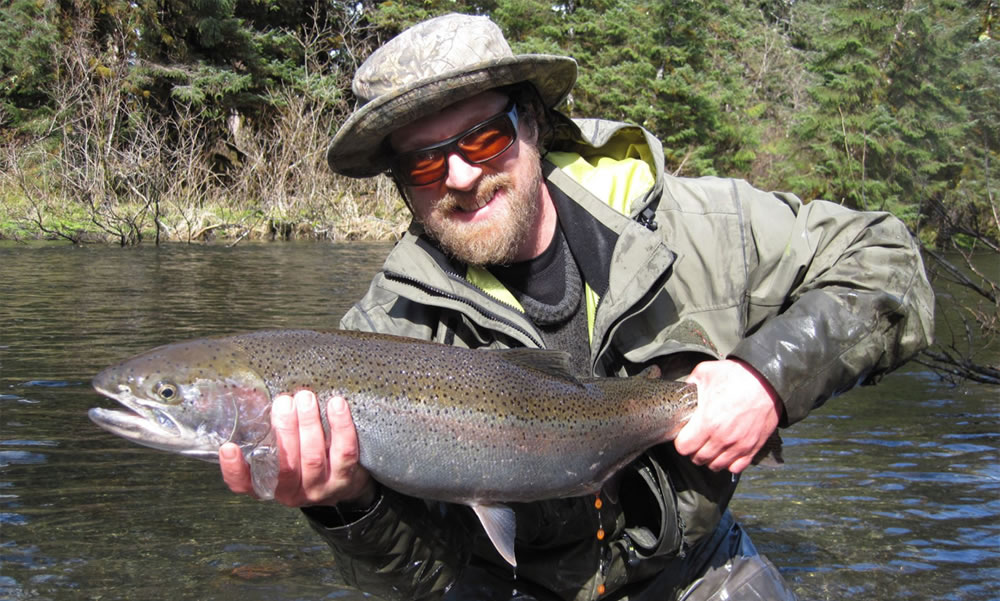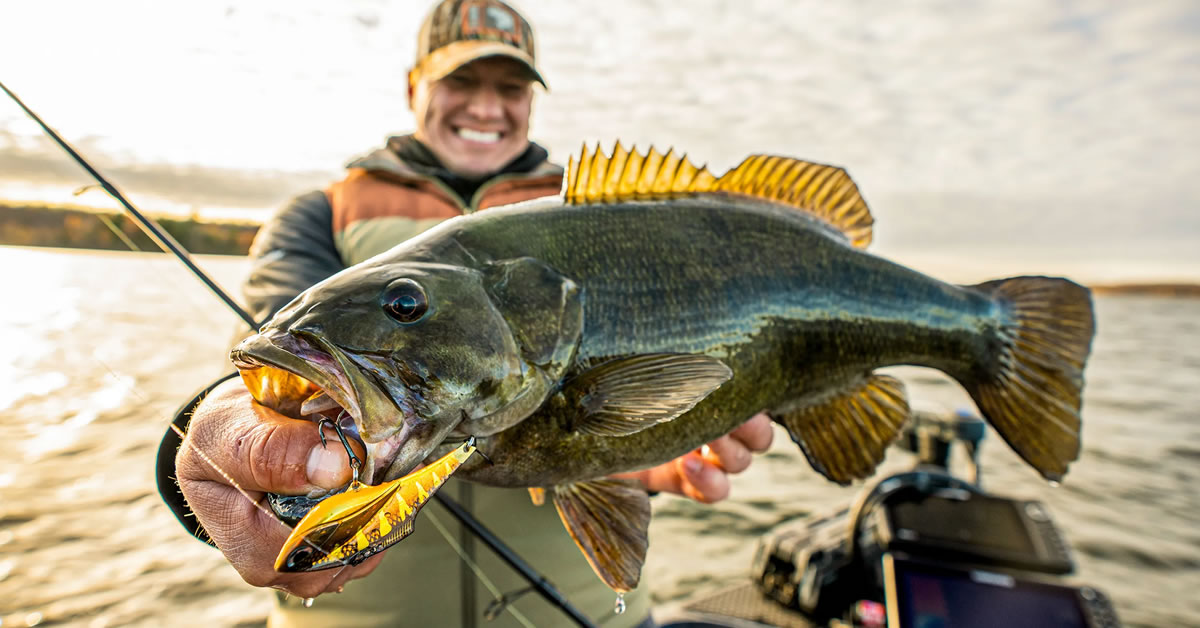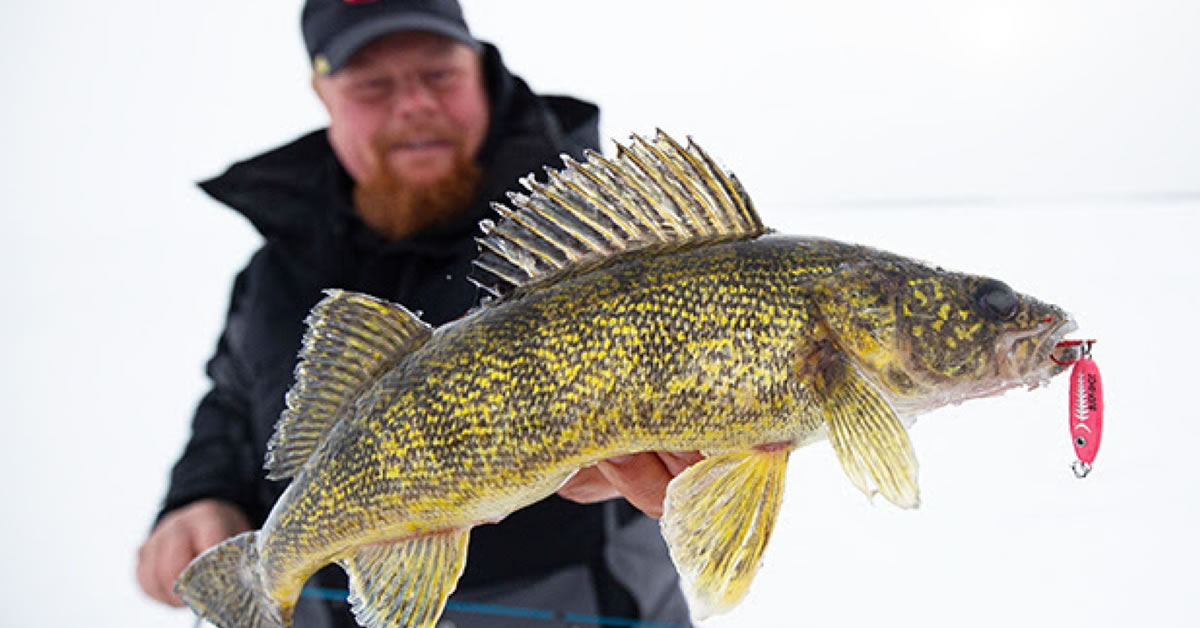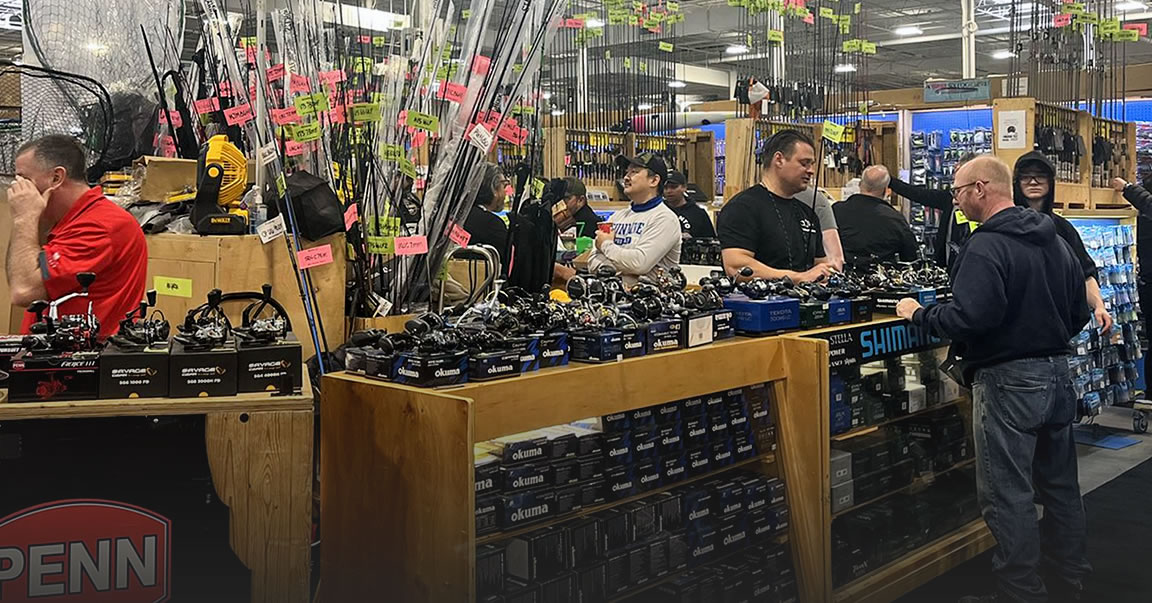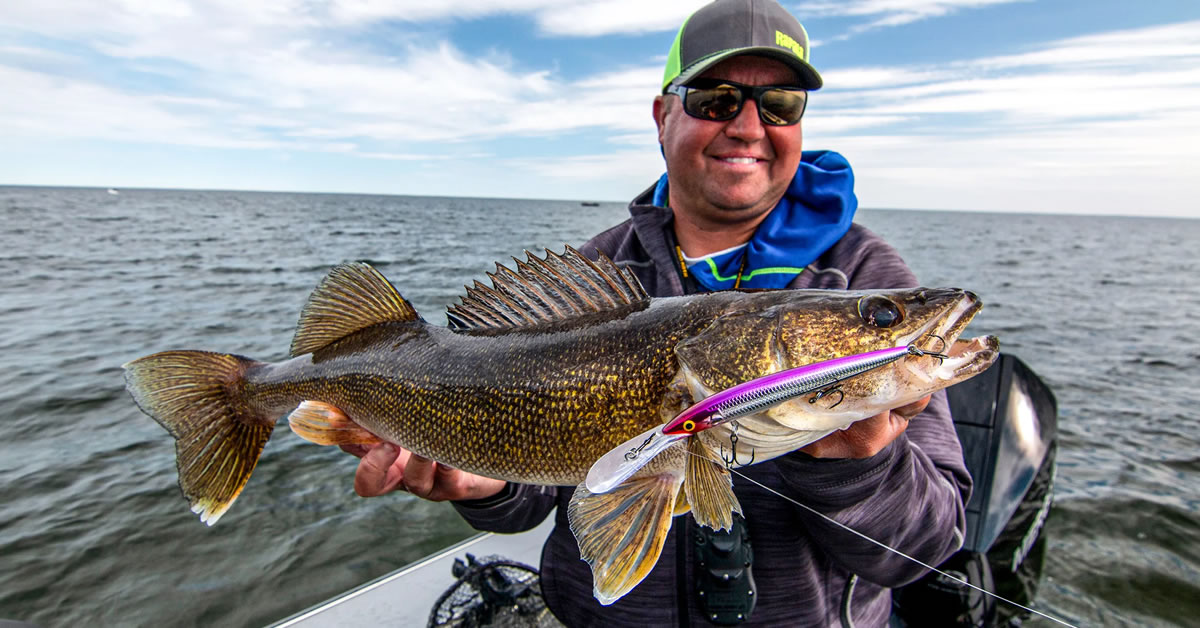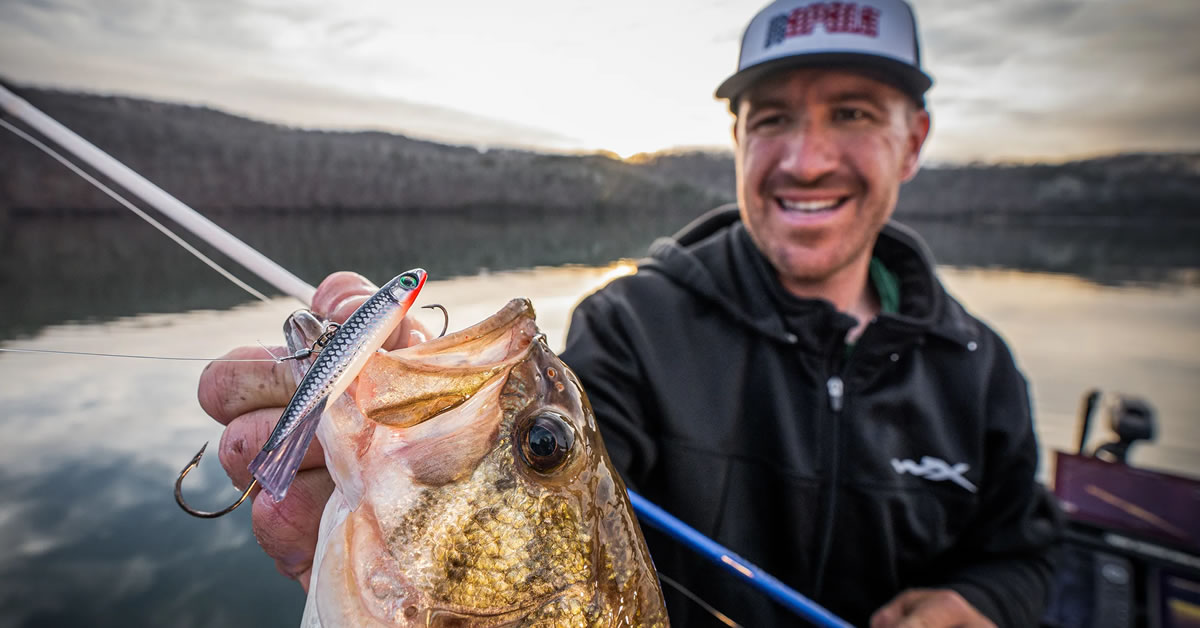The Dirt on Worms
Keys for keeping worms prime for fishing.
by Craig RitchieThere are times when it really pays to come full circle. Most of us were introduced to fishing as kids, honing our skills on panfish under some shoreline dock, or on chubs and suckers in a local brook - inevitably by using worms for bait.
More often than not that would in turn lead to other adventures gathering worms from rain-soaked lawns and sidewalks, and learning how to keep them alive until our next fishing adventure.
Sadly, it's a skill many of us lose over time as we grow up and discover artificial lures. And that's too bad, because whether we're drifting a rushing stream for steelhead or big resident brown trout, or probing open lakes for walleye and smallmouth bass, there are still many situations where worms will continue to outproduce just about anything else on the water.
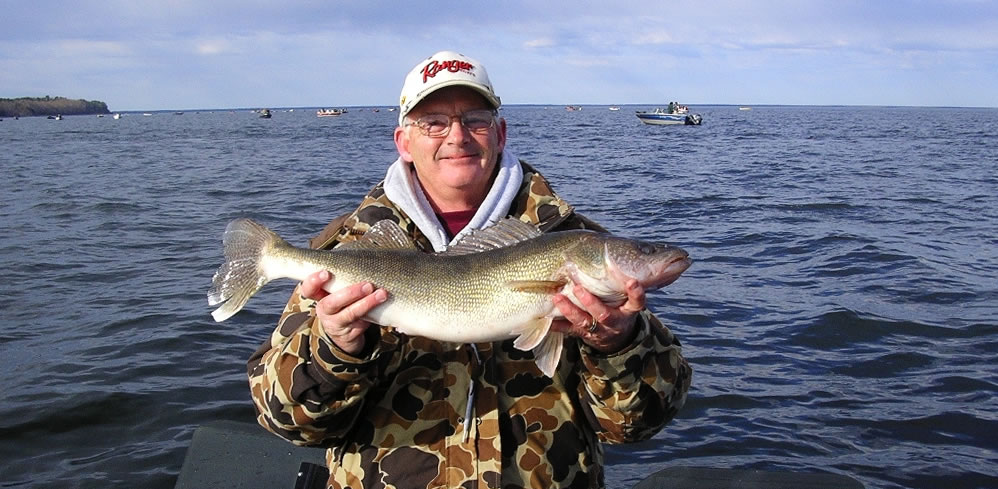
Start off with a trip to the local fishing store and buy some proper worm supplies. For a few bucks you can buy a fiber-sided worm storage container, a suitable quantity of commercial worm bedding, and a bag of worm food - everything needed to keep prime quality bait right through the season.
Sure, you can just keep worms in garden soil but that's going to inevitably leave a real mess not just all over your hands, but all over the boat as well. Proper worm bedding doesn't just work better, it saves cleanups, making it a much better choice.
Worms store best in cool temperatures, and ideally in a refrigerator. This obviously may not go over well with other members of the family, so if you have a second fridge in the house - a bar fridge or a beer fridge in the garage, for example - then finding space there might be best.
Pour the worm bedding out of its plastic bag into a bucket, and begin to moisten it following the manufacturer's directions. You want the bedding to be damp to the touch, but not dripping wet. Use water from a rain barrel or a bucket placed outside under a downspout, or even bottled water to do this, rather than regular chlorinated tap water. Chlorine will greatly reduce your bait's life expectancy, so avoid it at all costs.
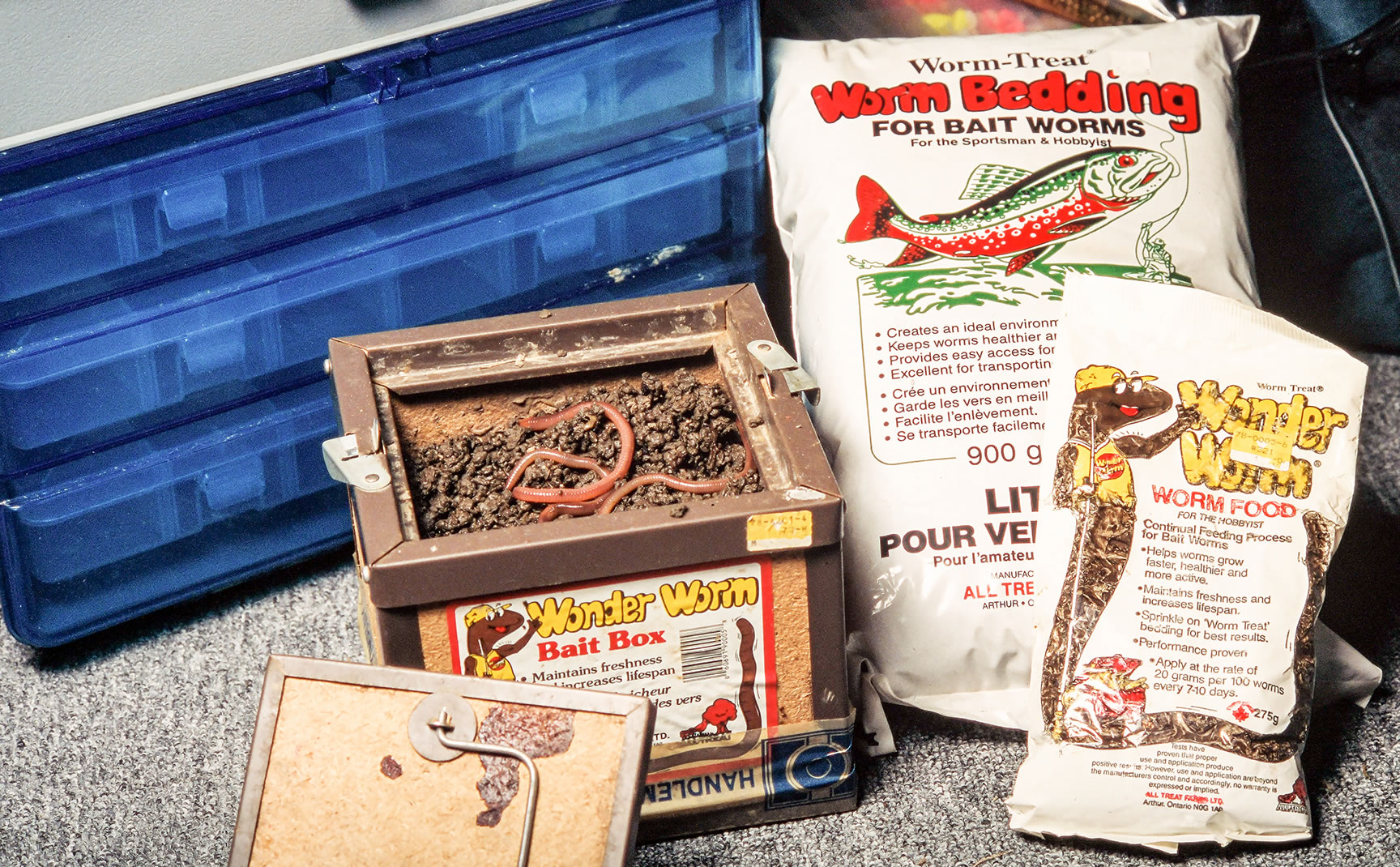
Spring is prime time to gather a season's worth of worms with little effort. Heading out after dark scanning a sprinkler-soaked lawn with a flashlight usually yields quick results, allowing several dozen prime night crawlers to be collected in a half hour or less. Periodically dipping your fingertips in a small container of sawdust will give you a much better grip on slippery worms, and prevent damaging them by squeezing too hard.
Before you dump them in the container, give the worms a quick rinse to clean off any remnant sawdust, grass and dirt, which will go a long way toward keeping the worm bedding cleaner and your bait healthier.
The number of worms that can be accommodated in a given container depends on their size, of course, and most commercially available containers will note suggested capacity. Load it up by just laying the worms on top of the bedding - don't try to cram them in there - then pop the container in the fridge for the night. The next morning, discard any worms that have not burrowed into the bedding, as they're not likely to survive.
Adding a few sprinkles of powdered worm food to the surface of the bedding, following the manufacturer's directions in terms of volume and frequency, will ensure the worms don't just survive, but thrive, developing thicker skins that resist tearing on a hook. In most cases, you'll notice them looking more robust in just a few days. Nice meaty worms don't just look more attractive to fish, but stay on the hook longer and are better able to withstand inflation with a worm blower.
We might think of fishing with worms as kid stuff, but there's nothing little league about the catches they can produce. That's especially true in the spring when fish haven't seen one for months. Pick up some supplies, gather some crawlers on a warmer spring night and rediscover why worms are the world's most popular live bait. They're free to gather, super easy to maintain and crazy effective in the water. What more could anyone ask for?
Worm Storage Basics
- Frabill Habitat II Worm Storage System
- Intruder CrawlerCrib
- Buss Worm Bed-Ding
- Frabill Fat & Sassy Worm Bedding
- Magic Worm Food
